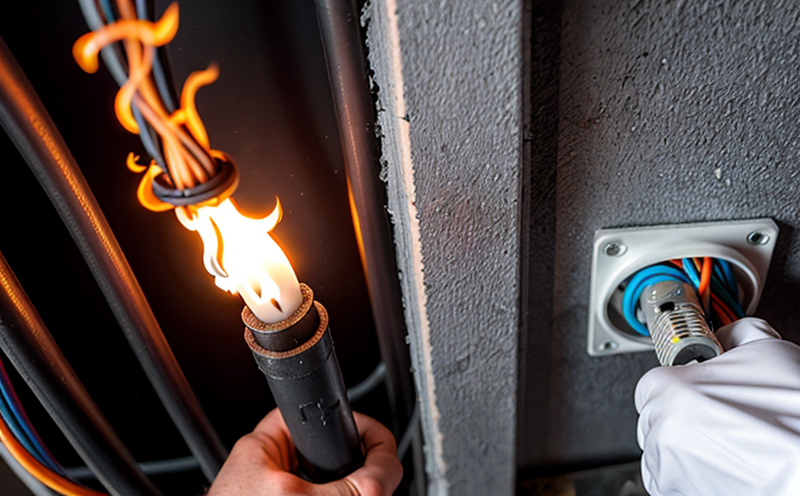Toxic Gas Analysis of Burning Cable Materials
The analysis of toxic gases emitted by burning cable materials is crucial in ensuring fire safety and compliance with international standards. This service focuses on the detailed evaluation of the gases produced when various types of cables are subjected to combustion, providing insights into their chemical composition and potential health risks.
Understanding the toxicological properties of these emissions is essential for manufacturers, quality managers, and compliance officers alike. The testing process involves precise specimen preparation, exposure under controlled conditions, and subsequent analysis using advanced instrumentation. This ensures that any hazardous substances can be identified early in the product development cycle, thereby minimizing risks to end-users.
The importance of this service cannot be overstated, especially given the increasing demand for more sustainable and environmentally friendly materials in the construction industry. By identifying potentially harmful compounds released during a fire, we help our clients make informed decisions about material selection and design improvements.
Our laboratory adheres strictly to international standards such as ISO 13679:2015, which outlines procedures for determining volatile organic compounds (VOCs) in the smoke produced by burning materials. Compliance with these guidelines ensures that our results are reliable and internationally recognized.
To further enhance the accuracy of our findings, we employ state-of-the-art equipment including gas chromatographs coupled with mass spectrometers (GC-MS). These tools allow us to detect even trace amounts of hazardous substances, ensuring comprehensive coverage across all tested samples. Additionally, our experienced technical staff provides expert interpretation of results, offering valuable recommendations for improvement where necessary.
The application of this service extends beyond mere compliance; it also serves as a critical tool in product development and innovation. By continuously monitoring changes in material composition during the manufacturing process, companies can stay ahead of regulatory requirements while enhancing safety features within their products.
Applied Standards
| Standard Code | Description |
|---|---|
| ISO 13679:2015 | Determination of volatile organic compounds (VOCs) in the smoke produced by burning materials. |
| ASTM E84-18 | Standard Test Methods for Surface Burning Characteristics of Building Materials and Products. |
| EN 50260 | Determination of the heat release rate (HRR) from materials in a specified fire test. |
Competitive Advantage and Market Impact
In today's competitive market, ensuring that your products meet stringent safety standards is not only obligatory but also a key differentiator. By offering comprehensive toxic gas analysis services for burning cable materials, our clients gain valuable insights into the environmental impact of their products early in the design phase.
Our service helps manufacturers comply with regulations set forth by organizations like Underwriters Laboratories (UL) and National Fire Protection Association (NFPA), thereby reducing legal risks associated with product liability lawsuits. Moreover, it enables companies to market themselves as leaders in sustainability and safety, attracting both regulatory bodies and environmentally conscious consumers.
For quality managers and compliance officers, this service provides peace of mind knowing that their products are rigorously tested against recognized international standards. It also facilitates smoother interactions with regulatory authorities during audits or inspections, potentially saving time and resources.
Use Cases and Application Examples
- Detecting hazardous substances in newly developed cable materials before mass production begins.
- Identifying areas for improvement in existing product lines to enhance fire safety performance.
- Complying with regional fire codes and regulations specific to different markets where the products are sold.
- Supporting R&D efforts aimed at creating more sustainable and environmentally friendly cable solutions.





